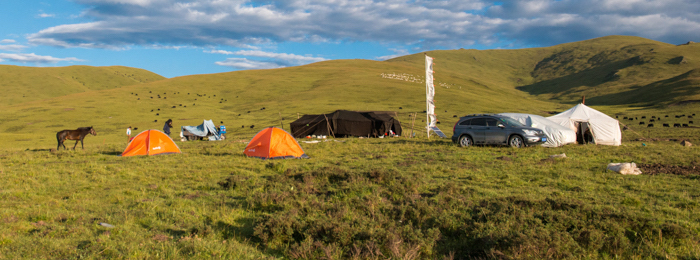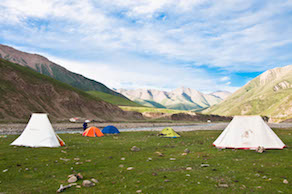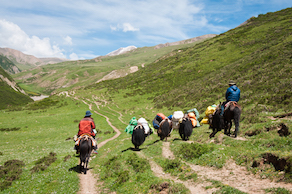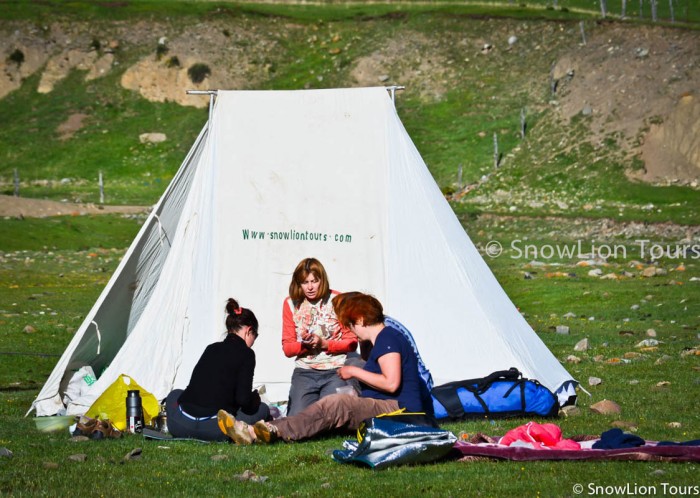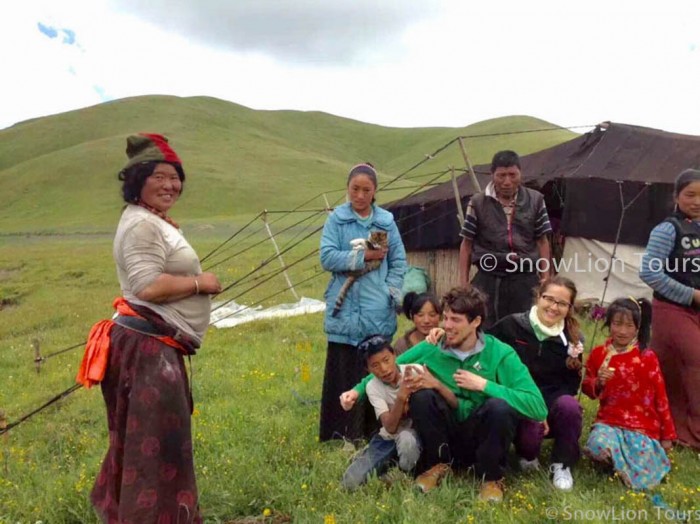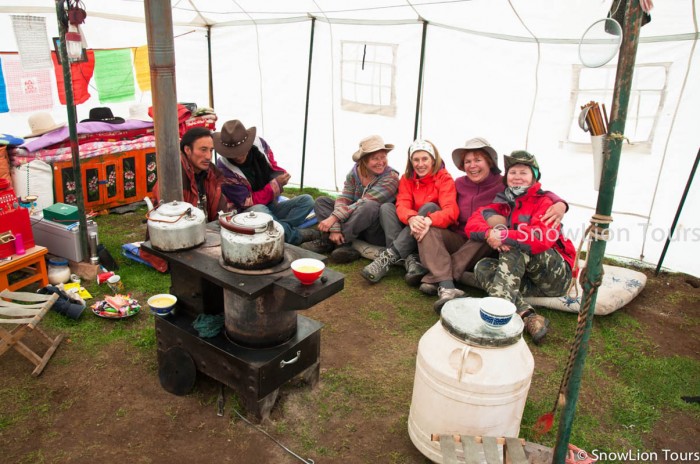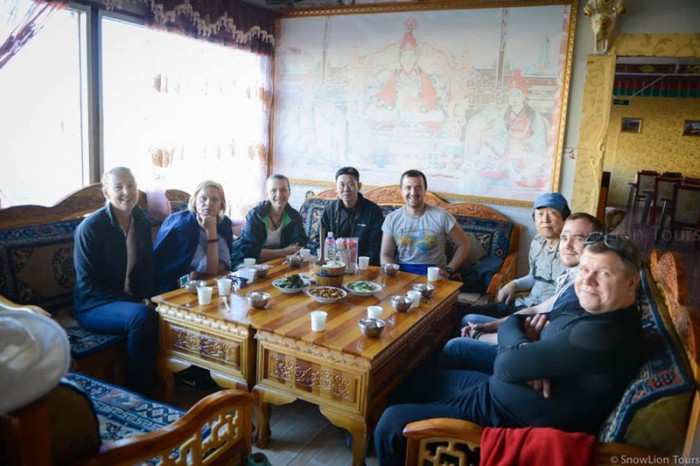Day 1: Xining – Shachung Monastery – Lo Dorjee Drak Cave – Rebkong [2480m] 230km
Drive from Xining to Shachung Monastery, which is located on a mountain top where you can enjoy panoramic view of Yellow River in the opening valley. Then we will descend into the valley and drive along the Yellower. On the way, we will make a detour to Lo Dorjee Drak Meditation caves. Lo Dorjee Drak is consist of small monastery and many meditation caves located beneath giant cliff, where great yogis used to take their meditation retreats over many centuries. This meditation site is especially famous for a monk named Lhalong Paldor, who assassinated King Langdarma, the last emperor of Tibet. Langdarma was a king who almost destroyed Buddhism in Tibet. In order to save Buddhism, Lhalong Pardor went to Lhasa and killed Langdarma by bow and arrow. Afterwards he came back to Gyantsa and continued practice Buddhism in these caves . Those bow and arrow are said to be buried under Mani stones in this place up to nowadays. If you are interested in meditation, this is a powerful and quiet place to do a short session of meditation. Afterwards, drive to Repkong though a newly highway in the deep valley. Repkong is home many monasteries which practice Tibetan Buddhism and Bon. This place is famous for traditional Tibetan arts.Repkong art originated in the 15th Century Over the centuries Repkong has cultivated numerous folk artists engaged in Buddhist painting and sculpture, hence its reputation as the home of Tibetan art.
We will stop by two famous artist monasteries called Sanggeshung Yagol (Upper Wutun si) and Sanggeshung Magol(Lower Wutunsi) to see how these incredible Thangka are made.
Day 2: Rebkong – Mayshul Forest – Tsekog grassland – Camp Site [3660m] 150km
In the morning, we visit Rongwu Gonchen Monastery, which is located to the west of Rongwu Guchu River, in Tongren county, Huangnan Tibetan Prefecture. This monastery is the largest monastery in the region, originally founded as a Sakyapa Monastery with about 1000 monks at the peak of it’s power. Now, it belongs to Gelupa order and still hosts more than 400 monks. The famous chapels are Assembly Hall, Debating Hall, Protector Hall, Matreya’s Hall(Future Buddha), Hall of 1000 Taras, Hall of Manjushiri (Buddha of Wisdom).etc.
Afterwards, drive through the Mayshul Forest, a virgin forest about 50km west of Rebkong. After drive through a tunnel, the land became wider and you are in the nomadic region. Our guide will find a nice place to camp near a nomad tent, and you will be experiencing firsthand the lifestyle of Tibetan nomads. Join nomads herding yak and sheep and making cheese, yogurt, and butter .etc.
Day 3: Camp Site – Trika – Kumbum monastery – Xining [2270m] 320km
Travel from Tsekog back to Xining, we will take different route to embraces the best of it. Stopping off at Trika for quick lunch and continue towards Xining. On the way, we will stop and you can walk over the Yellow River bridge. This is the most clean part of yellow River, Then drive through at geographic park with colorful land formation. Before reach Xining, we will make a small detour to visit Kumbum Monastery. In Tibetan, Kumbum means one hundred thousands Buddhas. It is the famed birth place of Je tsongkapa, the reformer of the Gelupa school of Tibetan Buddhism. Kumbum is one of the six great monasteries in Tibet and home to over 600 monks. After drive 25km, we will reach at your hotel and our service is end.




